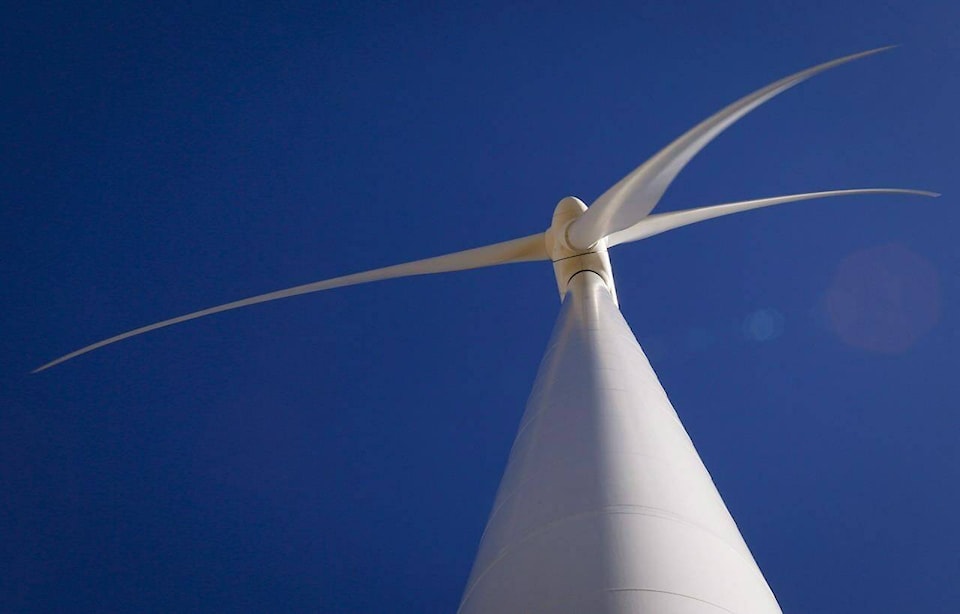Alternative energy projects will soon be blowing through B.C., and three exploration application sites are sailing through Quesnel’s mountains.
“As a result of the announcement from BC Hydro for a call for power, we have seen an increase in investigative applications for solar, run of river and wind projects,” said a statement from the provincial energy ministry.
The three proposed research sites include:
• Telegraph Range directly west of Quesnel (almost 1,700 hectares under exploration) under land file number 5408117
• Tzenzaicut Lake southwest of Quesnel (almost 5,000 hectares under exploration) under land file number 5408116
• Dragon Mountain east and southeast of Quesnel (about 3,200 hectares under exploration) under land file number 5408118
“The site was selected for three primary reasons that make this site ideal for potential future wind energy development,” said the proponent (identified only as a numbered company) in the application report for each of the three spots. All three applications were identically worded.
The applicant noted “the site has minimal anticipated environmental impacts, the wind resource is expected to be exceptional based on an initial desktop analysis, (and) its location is not visible from population centers and thus there will be no noise concerns with respect to dwellings, and the site avoids all provincial and federal protected zones.”
The licensing application stated that the air movement would be measured with a LiDAR or SoDAR wind monitoring platform. The device would have a surface area of less than 25 square meters. When decommissioned, all equipment related to the remote monitoring station would be removed.
“A minimum of one year of near-complete wind data collection is required for a bankable energy yield assessment and to secure project financing, while two years of complete data would be ideal,” said the applicant.
The ministry clarified that should any of the sites be chosen, the land would not be sold to the proponent.
“Wind projects on Crown land go through a number of tenure types from an investigation licence, to construction with a General Area Licence of Occupation, to a final built footprint usually held under a lease and or right of way,” the spokesperson told The Observer. “Land for these purposes is never converted to private fee-simple.”
There are already turbine sites near Port Hardy, Kelowna, and several in the Dawson Creek / Tumbler Ridge area.
The proponent’s application stated that should there be enough wind at any of the sites under investigation, the affected First Nations would be engaged, and the next step of studies would be done for archaeological and heritage factors, wildlife and birds, plantlife, forestry and mining impacts, and other registered land users.
“Modern wind turbine technology is a result of advancements in aerodynamics, engineering, electronics, and instrumentation,” said a statement by Clean Energy BC. “These changes have immensely improved the efficiency of modern turbines. Wind turbines sit atop high towers to take advantage of higher and more constant wind speeds. When the wind blows and passes the blades, the rotor of the turbine rotates. The rotor is attached to a shaft which subsequently turns gears and powers a generator inside the nacelle at the top of the tower. Cables carry the electrical current down the tower to a substation where the current passes through transmission lines to residences or businesses.”
“Across the province there are over 200 active Investigative Licences that are held by companies exploring for wind potential,”said the ministry spokesperson. “These licences generally have a term of five years and undergo replacement if the proponent shows due diligence on the land and wishes to continue the tenure. Currently (the provincial government) has 62 new clean energy investigative licences that we are processing across the province, along with 139 replacements.”
Clean Energy BC said the typical on-shore commercial wind turbine in B.C. “stands between 70 to 130 meters tall with three blades, each 40 to 60 meters in length.” Those windmills are each capable of generating up to three megawatts of power “and are 200 times more efficient than they were two decades ago.”
